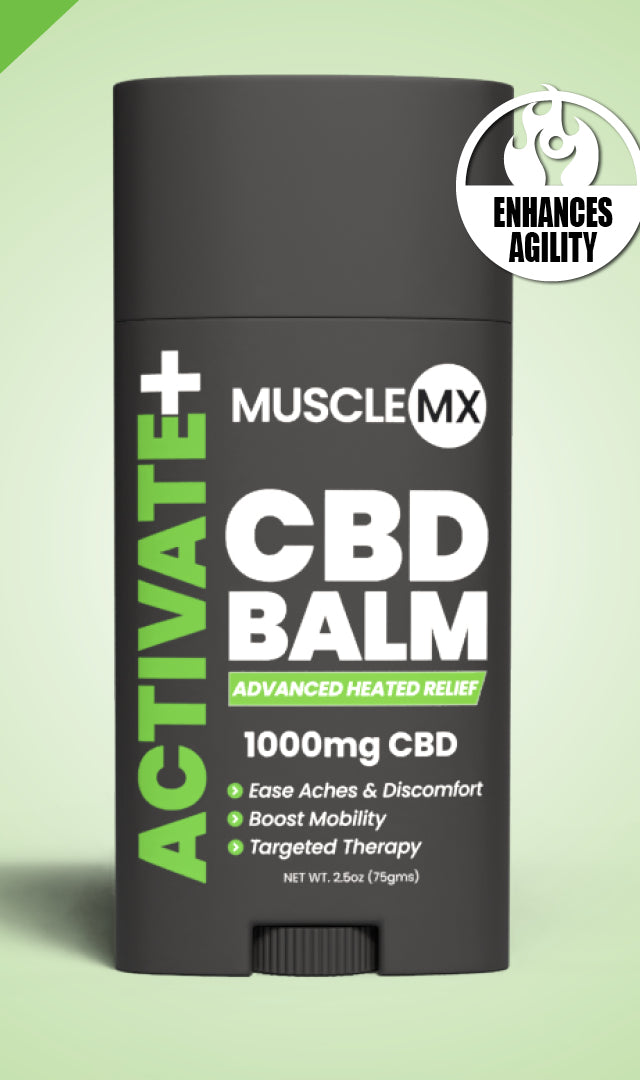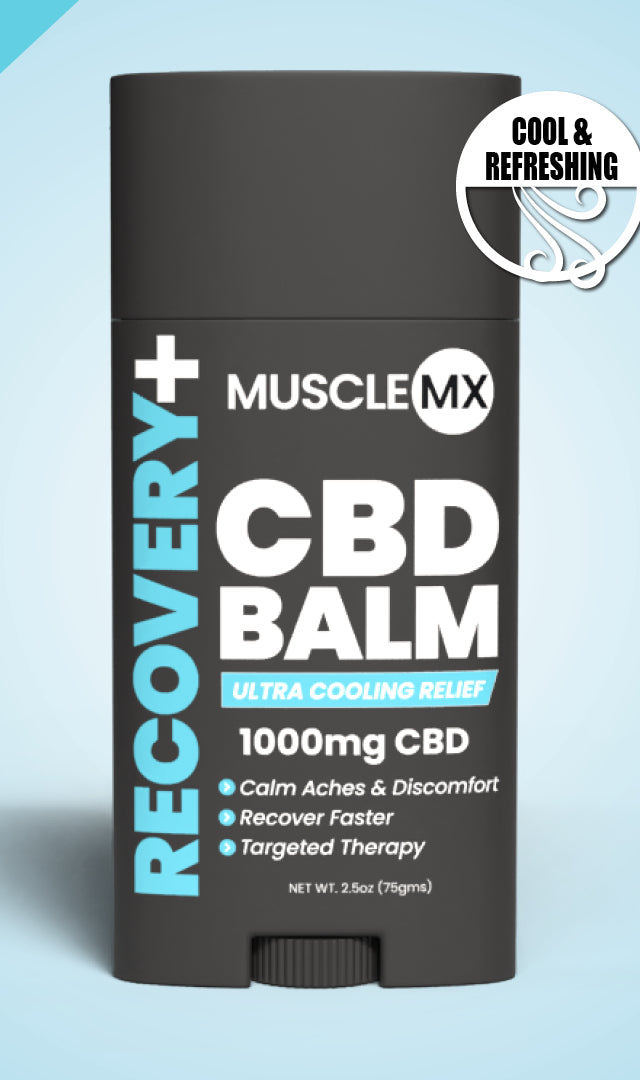Why Is My Body Aching? How Can I Fix It?
|
| Have you ever woken up in the morning feeling like you've been hit by a truck, with every muscle in your body begging for mercy? Or have you ever experienced sudden and intense muscle pain after a routine workout? |
Well, you're not alone. In fact, body aches and muscle aches are among the most common complaints heard in doctor's offices and wellness clinics worldwide. So, what causes these aches and pains, and why do they seem to be plaguing us more and more in our fast-paced world?
Today, Muscle MX is diving into the world of body aches and muscle pains, exploring the common symptoms, causes, and treatments. From viral infections to autoimmune disorders, we'll look closely at the various medical conditions that can lead to these symptoms.
We'll also discuss the importance of proper diagnosis and treatment and explore preventative measures and self-care techniques that can help reduce the frequency and severity of these aches and pains.
What Are Common Causes of Body Aches and Muscle Aches?

It's not rare for body aches and pains to strike without warning. There are several everyday activities and medical conditions that can be possible causes of these symptoms:
Overuse or Strain
Have you ever felt the telltale twinge of a pulled muscle after a long workout, or maybe you've experienced the dull ache of a sore back after a weekend of heavy lifting?
Overuse and strain are two of the most common culprits concerning body aches and muscle pains.
Whether you're a weekend warrior or an office worker hunched over your computer all day, you're at risk for these injuries; we've all been there — pushing our bodies to the limit and paying the price with aching muscles.
Viral Infections
Viral infections such as the common cold and flu can also lead to body aches and muscle pains. When we catch a cold or the flu, our immune system goes into overdrive to fight off the virus. This can result in a sore throat or chest and other pains throughout the body, as well as fatigue and weakness.
In addition, during infections, our bodies release a flood of chemicals and hormones, such as histamine, cortisol, and serotonin, leading to increased inflammation and pain.
Immune System Disorders
In some cases, the cause of body aches and muscle aches can be traced back to immune system disorders. Lyme disease, for example, is a bacterial infection that can cause joint pain and muscle pain, fatigue, and weakness.
When our bodies become oversensitive to certain substances, they can launch an attack against our healthy cells, resulting in autoimmune reactions that lead to pain and inflammation. These conditions can be complex and challenging to diagnose, but working with a healthcare provider to find the root cause of your symptoms is essential.
Chronic Fatigue Syndrome (CFS) and Fibromyalgia
Chronic fatigue syndrome (CFS) and fibromyalgia are two medical conditions characterized by widespread pain, fatigue, and muscle weakness. Despite extensive research, the exact causes of these conditions remain elusive, and a combination of factors likely contributes to their development.
One theory suggests that CFS and fibromyalgia may be related to imbalances in the central nervous system, including changes in pain perception and processing. There is also evidence that these conditions may be associated with altered immune system function and changes in cytokine levels, which are signaling molecules involved in inflammation and pain.
Additionally, genetic predisposition may play a role, as there is a higher incidence of CFS and fibromyalgia in families.
It is also believed that environmental and lifestyle factors, such as stress, trauma, and sleep disturbance, may trigger or worsen symptoms in individuals with a genetic predisposition. However, more research is needed to understand these conditions' underlying mechanisms fully.
Hypothyroidism
Hypothyroidism, also known as an underactive thyroid, is a common endocrine disorder that affects the thyroid gland's ability to produce sufficient levels of hormones. The thyroid gland produces hormones that regulate metabolism and energy levels, and insufficient production of these hormones can result in various symptoms, including fatigue, weight gain, and muscle weakness. In some cases, hypothyroidism can also result in body aches and muscle pains.
Diagnosis of hypothyroidism typically involves a blood test to measure thyroid-stimulating hormone (TSH) levels and thyroxine (T4). However, in some cases, additional tests, such as a radioactive iodine uptake test or a thyroid biopsy, may be necessary to diagnose the condition accurately.
Electrolyte Imbalance
Electrolyte imbalances, such as low potassium, calcium, and magnesium levels, can result in various symptoms, including muscle weakness, cramps, and spasms. In addition, electrolyte imbalances can occur for multiple reasons, including poor dietary intake, excessive sweating, and certain medical conditions.
Diagnosis of electrolyte imbalances typically involves a blood test to measure levels of electrolytes in the bloodstream. In some cases, additional tests, such as a 24-hour urine collection, may offer more granular information.
Statins
Statins are a class of drugs commonly used to lower cholesterol levels and reduce the risk of cardiovascular disease. While statins are generally well-tolerated, some individuals may experience side effects, including muscle weakness and pain. In some cases, these symptoms may be severe and result in a condition known as statin-induced myopathy.
Diagnosis of statin-induced myopathy typically involves a thorough medical history, physical examination, and laboratory tests to measure muscle function and strength. In some cases, imaging studies, such as electromyography (EMG) or muscle biopsy, may be necessary to diagnose the condition accurately.
What Are the Treatment Options for Body Aches?

The first step in finding relief from body aches and muscle pains is identifying the underlying cause. Healthcare providers can perform a physical examination and order various tests to determine the source of your pain.
Diagnosing the underlying cause of body aches and muscle pains is essential in developing an effective treatment plan. Blood tests can provide valuable information about an individual's overall health, including levels of electrolytes, hormones, and markers of inflammation. In some cases, additional tests, such as imaging studies or biopsies, may be necessary to diagnose the underlying cause of symptoms accurately.
Once your doctor makes a diagnosis, they may recommend one of the following treatment options.
Physical Therapy
Physical therapy is a standard treatment option for individuals with body aches and muscle pains. Physical therapists can help to improve strength, flexibility, and range of motion through exercises and stretches.
In some cases, physical therapy may also include using modalities, such as heat therapy or electrical stimulation, to help manage pain and reduce muscle spasms.
Over-the-Counter Medications
Over-the-counter pain relievers can effectively manage mild to moderate pain and reduce inflammation. Non-steroidal anti-inflammatory drugs, such as ibuprofen, acetaminophen, and Tylenol, are common options to help manage pain and reduce inflammation.
Anti-inflammatory medications can be effective in managing conditions such as rheumatoid arthritis and can help to relieve symptoms and improve overall function.
Relaxation Techniques
Relaxation techniques, such as meditation, deep breathing, and yoga, can effectively manage stress and reduce muscle tension. These techniques can help to improve overall well-being and can be particularly helpful for individuals with chronic pain.
Diet Changes
In addition to traditional medical treatment, dietary changes, such as potassium, vitamin D, and calcium supplementation, can help manage body aches and muscle pains.
A balanced diet, rich in essential vitamins and minerals, can help support overall health and well-being — and if you are missing out on key minerals like vitamin D, your healthcare provider may recommend supplements to get you back on track.
For individuals with chronic pain conditions, such as fibromyalgia and rheumatoid arthritis, a multi-disciplinary approach to pain management and wellness is often necessary. This may include medical and behavioral therapies and lifestyle modifications, such as regular exercise and stress reduction techniques.
In addition, working closely with a healthcare provider to develop a comprehensive treatment plan tailored to an individual's specific needs and goals is recommended.
How Can You Prevent and Manage Body Aches and Muscle Pains?
Prevention through lifestyle changes is key to ensuring that your life continues to be healthy and comfortable for as long as possible. However, if you’re already dealing with body aches, there are several ways that you can manage your discomfort as well.
Healthy Lifestyle Choices
Adopting a healthy lifestyle can prevent and mitigate the onset of body aches and muscle pains. For example, chronic sleep deprivation has been shown to induce muscle soreness and fatigue.
In contrast, elevated serum cholesterol levels have been implicated in cardiovascular disease, which can present as muscle pain and weakness. Therefore, to optimize overall health, it is crucial to prioritize adequate sleep, maintain a nutritionally balanced diet, and get regular physical activity.
Avoiding Joint and Muscle Overuse
The repetitive and excessive use of a particular anatomic region, such as the back, neck, or extremities, can develop muscle strain and pain. To minimize the risk of overuse injury, it is crucial to implement proper body mechanics, such as using ergonomically designed equipment and regular intervals of rest and stretching.
Furthermore, individuals engaged in repetitive motions or physically demanding labor should consider incorporating strength-training exercises into their regimen to enhance muscle endurance and reduce the risk of injury.
Follow CDC Recommendations for Tick Bites
Tick bites can lead to the transmission of Lyme disease, characterized by widespread body aches and muscle pains.
The Centers for Disease Control and Prevention (CDC) recommends several measures to prevent tick bites, including wearing protective clothing, using insect repellent, and performing tick checks after spending time outdoors. In addition, prompt removal of attached ticks can reduce the risk of disease transmission.
Regular Check-Ups With Healthcare Providers
Routine check-ups with healthcare providers can help to identify and manage the underlying causes of body aches and muscle pains. Healthcare providers can perform a physical examination, order diagnostic tests, and provide individualized treatment recommendations based on each patient's specific needs and medical history.
Regular check-ups can also help monitor the progression of any underlying medical conditions and ensure appropriate modifications are made to treatment plans as needed.
Navigating Body Aches and Muscle Pains
Body aches and muscle pains are common and complex phenomena affecting individuals of all ages and walks of life. This reality highlights the importance of understanding the underlying causes and the various treatment options available for managing these symptoms.
From healthy lifestyle choices and regular check-ups with healthcare providers to using over-the-counter medications and home remedies, a range of strategies can help alleviate discomfort and promote well-being.
Muscle MX is dedicated to empowering individuals with the tools they need to optimize their body's performance and lead healthier, more active lives.
Sources:
Chronic Fatigue Syndrome | Johns Hopkins Medicine
Sleep deficiency and chronic pain: potential underlying mechanisms and clinical implications | PMC



















































